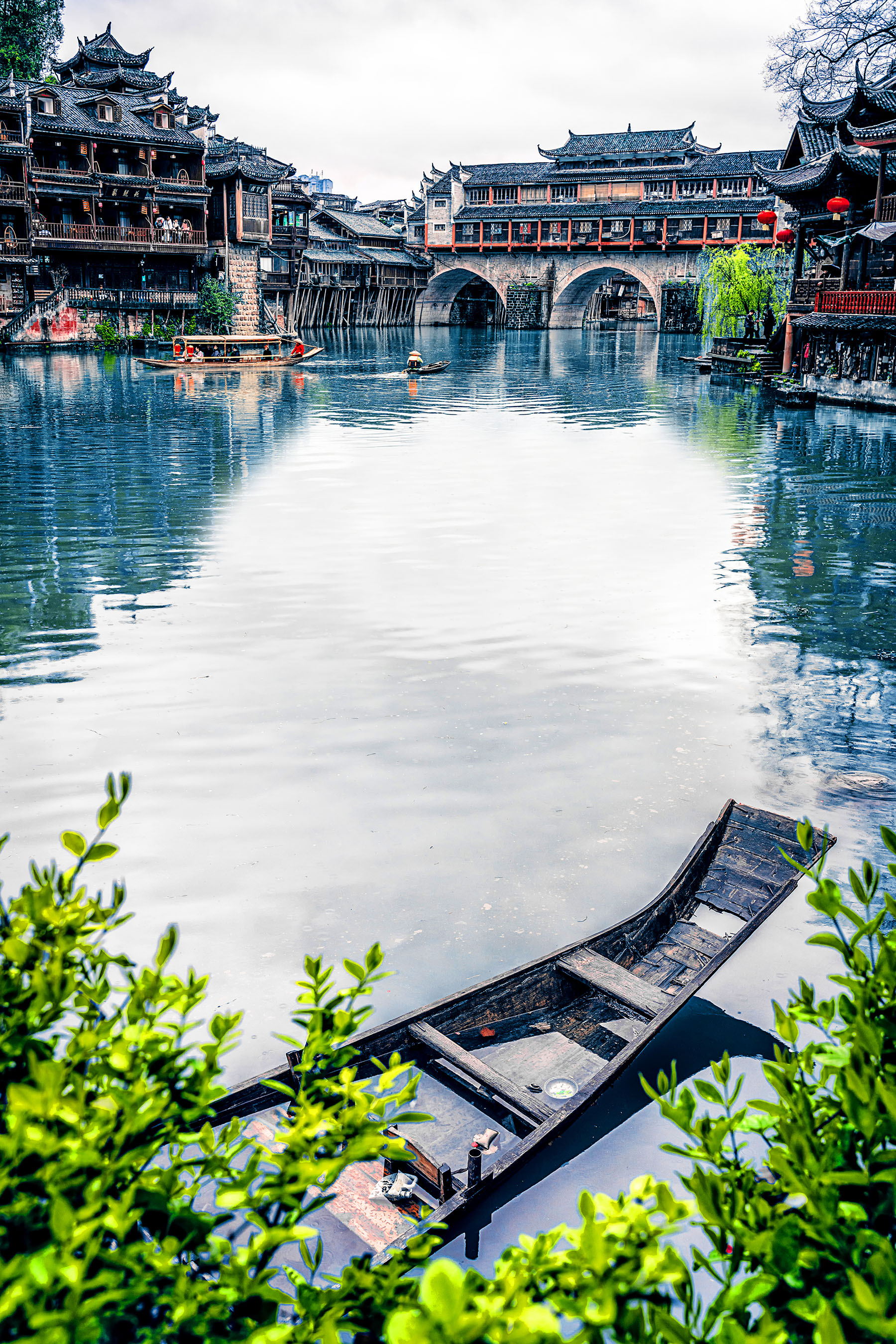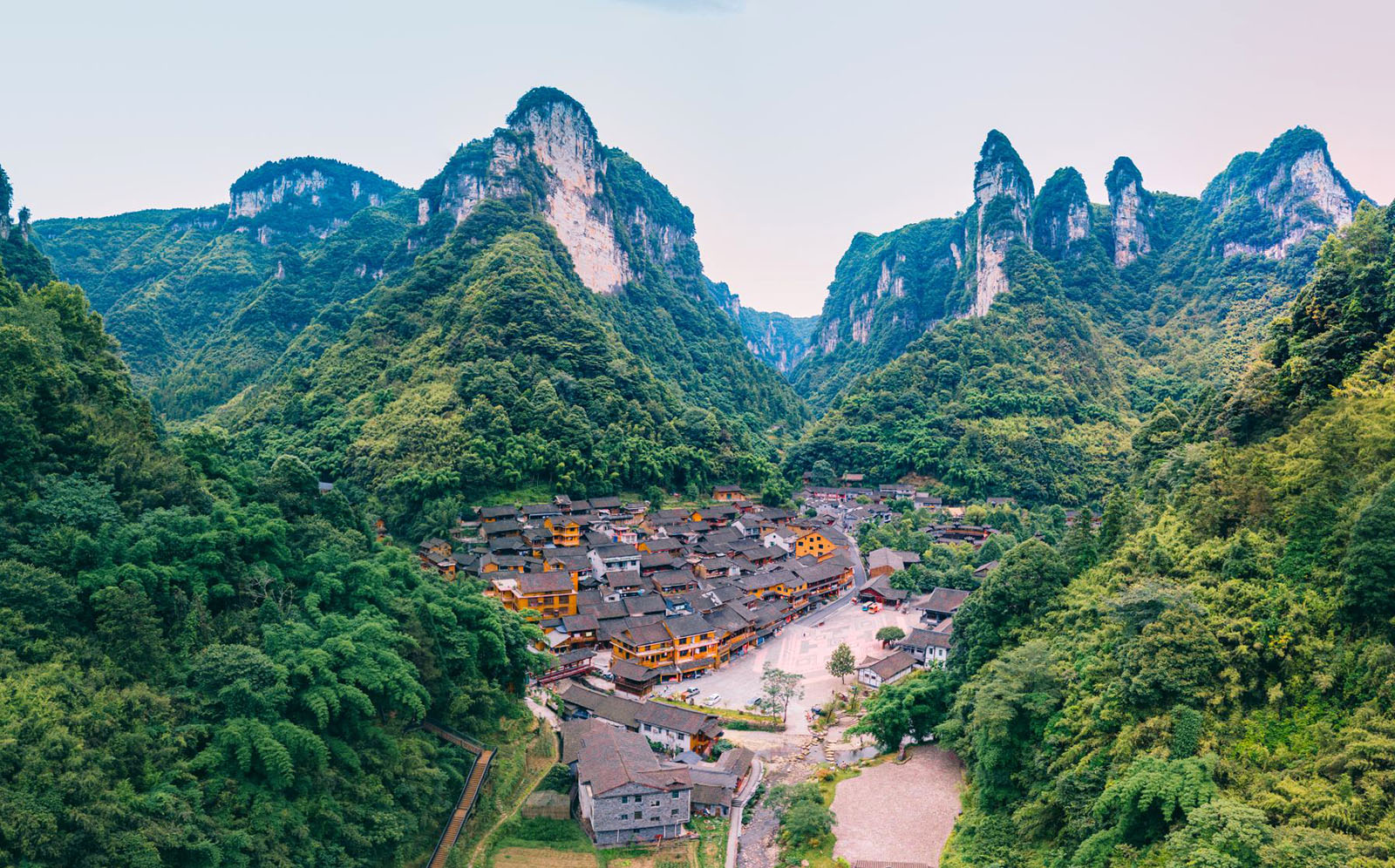Spectacular scenery gives people resilience, charm and rich culture, Yang Yang and He Chun report in Xiangxi, Hunan.

Editor's note: China Daily reporters leverage local expertise to devise diverse itineraries that showcase a blend of historical landmarks and natural wonders in highly recommended cities and sites, offering practical guidance to experience the country.
Hundreds of millions of years ago, this land was once a vast sea. In its littoral areas, relentless rivers carried vast amounts of quartz-rich sediment from the land, which steadily settled and built up over time. On the seafloor, an immense amount of carbonate material was deposited, mixed with mud and sand.
Over eons of tectonic shifts, what were once oceans have transformed into land, creating a world of peerless and spectacular natural beauty in the west of Central China's Hunan province. Two major rivers — the Yuanjiang and the Lishui — run across the land, bordered by the Wuling Mountains in the northwest and the Xuefeng Mountains in the southeast.
This area is now called Xiangxi, or western Hunan, which, from north to south, mainly includes Zhangjiajie, Xiangxi Tujia and Miao autonomous prefecture, and Huaihua.
READ MORE: Tracking a mountain of history
In this ethereal land, graceful rivers flow with poetry, and grotesque, breathtaking rock formations — like someplace on another planet — add an aura of mystery to this multiethnic region that has a long history and rich cultures.
Over 2,000 years ago, the great poet Qu Yuan was exiled by the king of the Chu state to the Yuanjiang River basin. Journeying upstream, he arrived in Huaihua, passing through Xupu, where the Xushui River joined the Yuanjiang River.
When the poet entered Xupu, seeing towering mountains and the rushing waters of the Xushui River, he could not help but exclaim: "Entering Xupu, I wander in hesitation; lost, I know not where to go."
In Huaihua, Qu Yuan wrote such masterpieces as Li Sao (The Lament), Tian Wen (Heavenly Questions), She Jiang (Crossing the River), and Shan Gui (Mountain Spirit). Here, he pioneered the tradition of Chinese romantic poetry, earning Huaihua the reputation as the "source of poetry".
For thousands of years, Xiangxi, a remote area from the central land, has been an inclusive region where ethnic groups have thrived.

Now, people of various ethnic groups account for more than 64 percent of the total population of over 8.2 million. Zhangjiajie is the cultural center of the Tujia ethnic group; Jishou, the capital of the autonomous prefecture, is the cultural center for the Miao ethnic group; and Huaihua is the cultural center of the Dong ethnic group.
In Yongshun county, the ruins of Laosicheng witnessed the pinnacle of power of the Tujia ethnic group in the Xiangxi region. Serving as the political, economic, cultural, and military center of the Tusi chieftain system for 800 years since the 13th century, Laosicheng, now a UNESCO World Cultural Heritage site, is where visitors can experience Tujia ethnic culture.
Despite their differences, people from various ethnic groups live harmoniously together, celebrating their cultures on special occasions and in their daily lives.
At the regular fairs that fall on fixed days in different towns, women wear beautiful ethnic clothes and delicate decorations while bargaining for goods with vendors, speaking melodious dialects.
Used to living in remote and inaccessible areas in the past, people in Xiangxi were known for their tenacity and ability to endure hardship. However, for a while, they were notorious for their brigand-like ferocity. This impression began to change with the emergence of modernist writer Shen Congwen in the 1920s, who was born and raised in Xiangxi's Fenghuang county. In his essays and fiction, inspired by his life and travels in this region, Shen depicted the people of Xiangxi as having a rustic and hardy exterior, beneath which lies a soul of sincerity, kindness, resilience, and a spirit that values loyalty above material gain.
Apart from being inclusive, diverse and poetic, Xiangxi is also a place of mystery.
ALSO READ: Food festival dishes up cultural menu
Tao Yuanming, a great poet and essayist in the Eastern Jin Dynasty (317-420), wrote in a famous essay about a person in Wulingyuan who accidentally found a utopia — a land of peach blossoms outside the world. Later, Wulingyuan often appeared as a symbol of utopia in works by great poets, such as Li Bai, Du Fu and Wang Wei in the Tang Dynasty (618-907).
The land's mysterious aura has been further intensified by the traditional practices of ethnic groups in their rituals of worshiping deities and funerals.
In 1988, the core scenic area of Zhangjiajie was named Wulingyuan, where people see peak forests shoot skyward from nowhere and on cloudy days, giant rocks covered by lush plants float in the air, an inspiration for the floating Hallelujah Mountains in James Cameron's 2009 blockbuster Avatar.
Zhangjiajie is now the top destination in Xiangxi for international tourists. Yet, like a hidden gem, Xiangxi awaits adventurers to further discover its breathtaking landscapes and rich cultural heritage amid its enigmatic mountains and pristine rivers.
Contact the writers at yangyangs@chinadaily.com.cn


